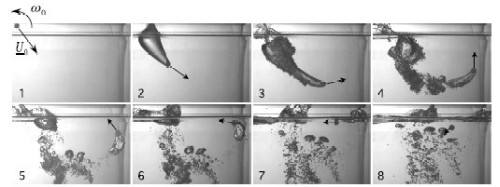By James Dacey
By many fans it is considered to be one of the most brilliant (soccer) goals ever scored, but by others it is dismissed as a bizarre fluke probably caused by rare atmospheric conditions.
The free kick scored by Brazilian fullback Roberto Carlos against France in 1997 is said to have “defied physics” on account of its wicked late swerve that stunned both the French goalkeeper and thousands of fans.
Now, 13 years on, physicists in France say that they can finally explain what happened and they believe that the wonder strike was no fluke.
On that early summer night in Lyon, Carlos struck the ball at around 35 m from the French goal. It was heading so far to the right that it initially cleared the wall of defenders by at least a metre and made a ballboy, who stood metres from the goal, duck his head. Then, almost magically, the ball curved to the left and entered the top right-hand corner of the goal.
In all the talk over the years, pundits and the occasional scientist have suggested a number of possible causes. They range from a gust of wind, to a materials effect in the ball, to unusually dry localized conditions as explained in this Physics World feature article from 1998. But the case has never been closed.
Guillaume Dupeux and his colleagues at the Ecole Polytechnique in Palaiseau have taken a more practical approach by modelling the flight of the football in a more controlled environment, firing tiny polymer spheres through water using a slingshot.
The lightness of the balls and the density of water enabled them to track the tiny spheres as they moved through a spiral which rotates in progressively smaller orbits. The researchers dub this the “spinning ball spiral effect” and explain that we only see this when friction allows the spin effects to become comparable with the forwards trajectory.

Tracking the trajectory of plastic spheres in water
Dupeux’s group argues that, before it smashed into the back of the net, Carlos’ free kick had also begun to follow a spinning ball spiral, which accounts for the fact that it seemed to bend significantly more at the end of its flight. The Brazilian skill came in because Carlos had kicked the ball with enough power and spin, from far enough out, for the spiral to take effect.
It’s a shame Carlos never quite managed to repeat the trick, but at least now we know it was worth him trying!
The research is published today in New Journal of Physics.



